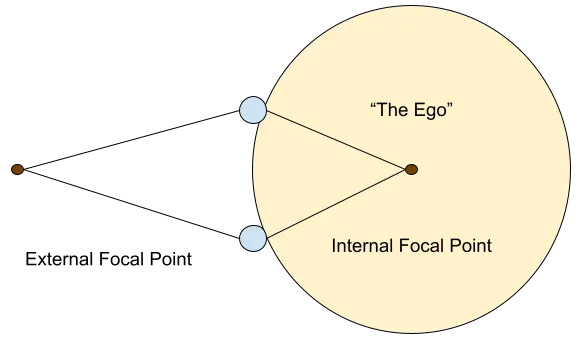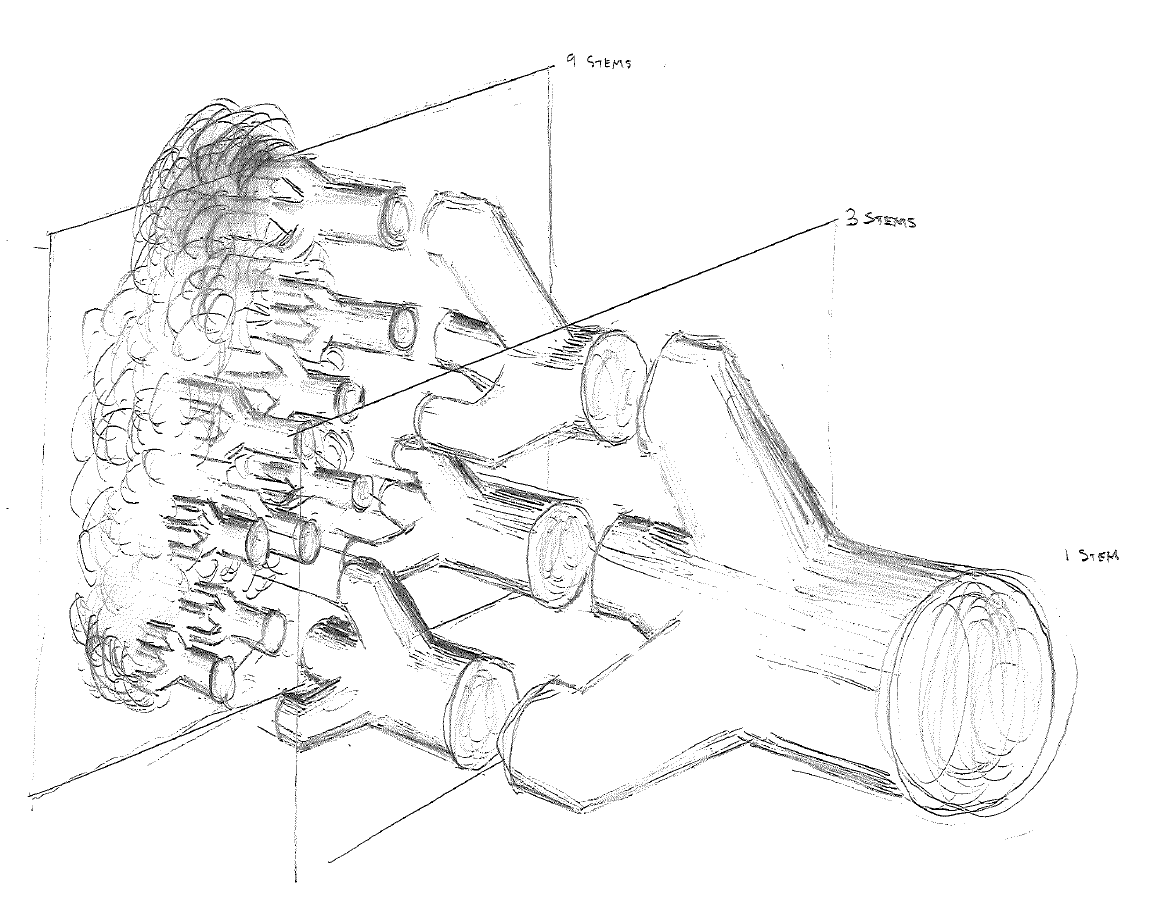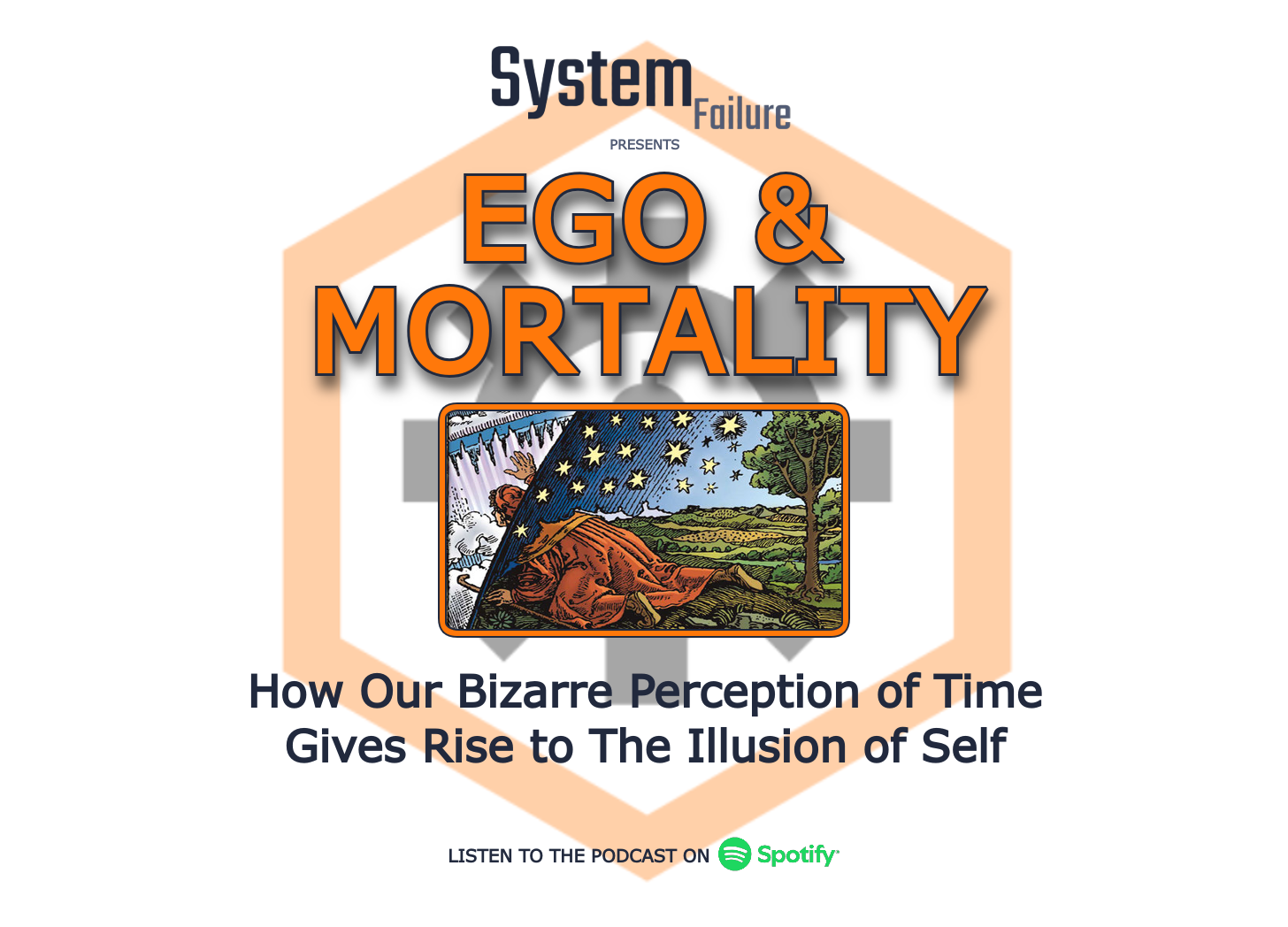Overview
Last week’s essay, The Symphony Analogy, used calculus as a springboard to suggest a certain interchangeability between the dimension of time—as measured with a stopwatch—and the three physical dimensions that we measure with rulers (length, width, and height).
The following essay extends that analogy with a fictional head of broccoli, rendered by the questionable artistic talents of the author. Being products of nature, both broccoli and humanity share a common structure. That structure pops into view when we use our mind’s eye to swap out one of those physical dimensions with a time dimension.
This broccoli analogy will fundamentally alter your conception of yourself, and expose your sense of individuality for the illusion that it is.
Introduction
Just like our concept of mortality, our individuality—or our “ego”—is a purely mental phenomenon that arises from a tragic inability to fast forward or rewind time.
The Illusion of Ego
Your ego is your mental conception of yourself. As a subjective observer, you triangulate on external objects by focusing your two eyes. But when I ask you to focus on yourself, you can only mirror this triangular pattern and interpolate backwards to a reverse focal point behind your eyes. This gives rise to that familiar feeling that you are riding around inside your head, looking out through your eyes like windshields. That inverted focal point feels like the seat of your consciousness. It feels like you.

In the physical world, of course, there is nothing behind your eyes but brain meat. But you are not your brain, you have a brain. Your parents didn’t name your brain. Nor did they name your body. They named an imaginary spot behind your eyes and acted as if that spot has a brain and a body.
Though it’s the most useful of fictions, your ego is entirely a construct within your mind. The late ethnobotanist Terence McKenna loved to state that the ego is just the tool we use to know whose mouth to feed at the dinner table. It’s just the mental reflection of your physical body. You walk around all day behaving as if this reflection is really you, but it’s actually just a phantom. You are no more your ego than you are your reflection in the mirror.
The Broccoli Analogy
There’s a fundamental connection between time and ego. If ego is the mental reflection of the physical body, then it’s every bit as time-dependent as the body.
Picture a head of broccoli. Notice that the main stem of the broccoli divides itself into many smaller stems. If you chop your broccoli near the florets, you get a cross-section of many small stems. But if you chop it in the middle, you get a cross-section of a few medium-sized stems. And if you slice it at the stalk, you’ll get a cross-section only of the large main stem.

The number of individual stems that result from taking a cross-section depends on where you decide to take that 2-dimensional slice. Only in the fullness of 3 dimensions are the apparently individual stems revealed to be part of one continuous whole.
The Geometry of the Human Story
Since we—like broccoli—are products of nature, the human story has a very similar geometry to it. To see that similarity, we need only swap out a physical dimension, measured by rulers, with a temporal dimension, measured by stopwatches.
Converting the length of the broccoli into a temporal dimension might be represented by a table like this:

We can take in all the inches on a ruler in a single glance. But we cannot fast forward or rewind a stopwatch. We’re stuck experiencing thin slices of the temporal dimension one-by-one, in sequential order. Like a flip-book animation.
This limitation on our perception is what makes us feel like mortals. If we could rewind or fast forward time, the idea of mortality would lose all coherence; life and death could be experienced any number of times. In a related way, time also creates the illusion of individuality that has so plagued human history.
The circular cross-sections of individual broccoli stems in the illustration above are only really individuals within that 2-dimensional slice. With length standing in for time, it’s easy for us to see that their status as individuals is an illusion. The 9 small cross-sections, the 3 medium-sized ones, and the single main stem are really part of a single, continuous whole.
If you had to use a stopwatch to measure the length of the broccoli, those cross-sections would all appear to be individual circles within each 2-dimensional slice. Their connection would be hidden from perception.
And so it is with humankind. We appear to each other as individuals only because we are stuck measuring history with a stopwatch. If we beheld human history as a physical shape—instead of being stuck with an animated flip-book of slices in time—it would be immediately obvious that we’re all a part of a single continuous whole.
Conclusion
Throughout history, we’ve been as root tendrils blindly encountering each other underground in the dark, ignorant of the divine reality that we’re all actually part of the same tree. In this analogy, the blackness that conceals our ultimate unity from us is the bizarre and limited way in which we perceive time.
Further Materials
In this fascinating 7 minute clip from the original Cosmos television program, Carl Sagan breaks down dimensionality in his usual, approachable manner…





